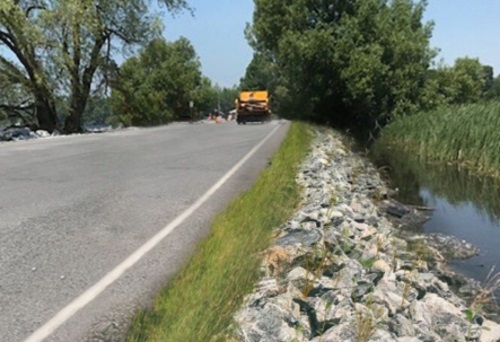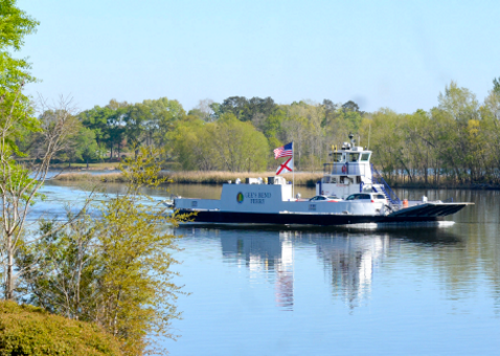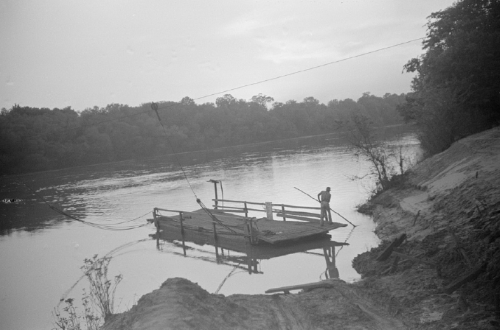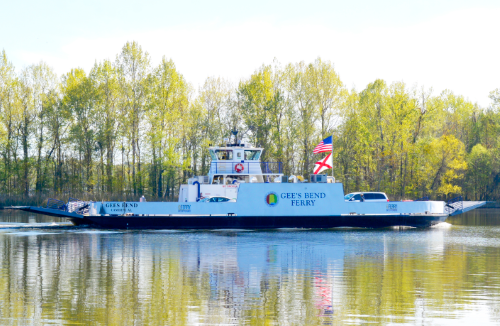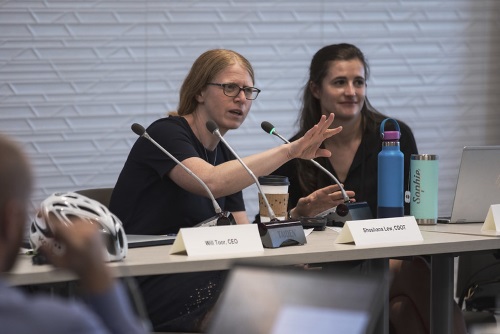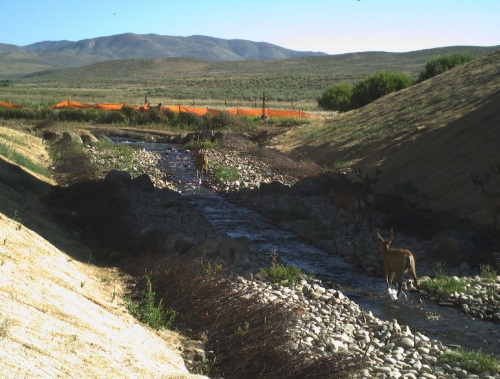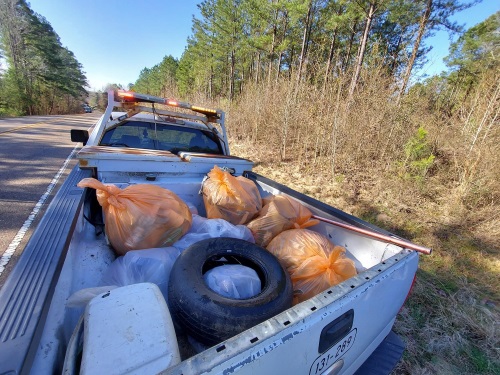The New York State Department of Transportation is heading up a $5.4 million project to “harden” a local roadway against damage from flooding and other weather events through the state’s Resiliency and Economic Development Initiative or REDI.
[Above photo by NYSDOT.]
The project focuses on a 1,800 linear foot section of County Road 57 – a critical connection that provides the only land access to Point Peninsula, an island community within the Town of Lyme near Lake Ontario.
Resiliency measures for this project include raising the vulnerable section of roadway three feet to mitigate potential flooding and halt further road deterioration. Additionally, the agency is installing “rip rap” – a term for human-placed rock formations – to provide further protection against the impact of wind, waves, and ice formation.
“Vital infrastructure along Lake Ontario has been adversely affected from severe flooding,” explained Governor Andrew Cuomo (D) in a statement. “Through REDI, and through the State’s partnership with local governments, these critical assets are being reimagined and rebuilt to mitigate future damage and disruption, ensuring public safety and safeguarding local economies.”
“By working together with our local partners and making smart, targeted investments like this one, New York is moving forward in the battle against climate change,” added Marie Therese Dominguez, NYSDOT commissioner. “These REDI projects will harden infrastructure, mitigate flooding and assist local communities in combating the rising waters of Lake Ontario for years to come.”
Gov. Cuomo created the REDI program in the spring of 2019 in response to an “extended pattern of flooding” along the shores of Lake Ontario and the St. Lawrence River. Five REDI Regional Planning Committees comprised of representatives from eight counties – Niagara, Orleans, Monroe, Wayne, Cayuga, Oswego, Jefferson, and St. Lawrence – work to identify “at-risk” infrastructure and public safety concerns.
The REDI Commission has to date allocated $20 million for homeowner assistance, $30 million to improve the resiliency of businesses, and $15 million toward a regional dredging effort that will benefit each of the eight counties in the REDI regions. It allocated the remaining $235 million towards local and regional projects that “advance and exemplify” the REDI mission.
Over the last two years, some 133 local and regional projects are now underway, including 107 projects in the design phase, 13 projects in the construction phase, and 13 projects completed.

